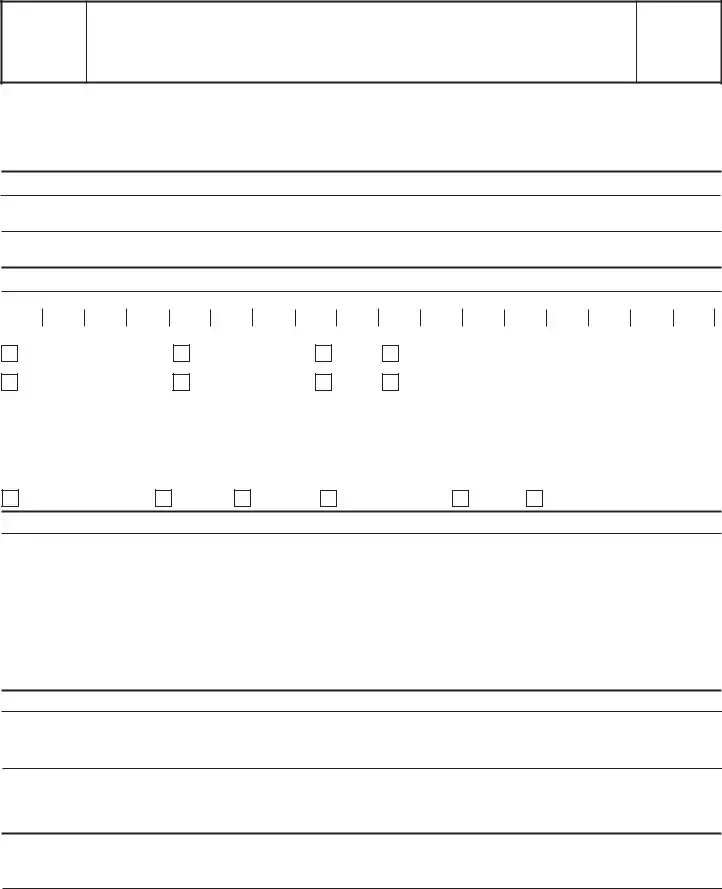The Utah TC-661 Certificate of Inspection form closely resembles the Vehicle Identification Number (VIN) Verification form used by various states. Both are administrative documents designed to confirm the unique identity of a vehicle through a physical inspection of its VIN. These forms are crucial for registering a vehicle, especially one brought in from another state or being registered for the first time. Authorized personnel, including law enforcement officers or designated agents, must complete these inspections to ensure the vehicle’s VIN matches the description provided by the owner or seller, preventing fraud and theft.
Another document similar to the Utah TC-661 form is the Bill of Sale for a Motor Vehicle. Even though their primary purposes differ, both documents play integral roles in the vehicle registration process. While the TC-661 form focuses on validating the vehicle’s identification number and physical specifications, a Bill of Sale provides a legal record of the transaction and ownership transfer. Both must include accurate vehicle information, such as make, model, year, and VIN, and are usually required by the Department of Motor Vehicles (DMV) for registration.
The Odometer Disclosure Statement shares similarities with the Utah TC-661 Certificate of Inspection, as they both contribute to ensuring truthful reporting during vehicle transactions. The Odometer Disclosure Statement is designed to prevent odometer fraud by documenting the vehicle's actual mileage at the time of sale. While the TC-661 form certifies the authenticity of the vehicle’s identification and physical attributes, the Odometer Disclosure ensures the integrity of the mileage claims, protecting the buyer’s interest.
Akin to the Utah TC-661 form, the Application for Title or Registration requires detailed vehicle information to successfully process a vehicle’s title or registration. This includes the VIN, make, model, and year, similar to the data verified via the TC-661. However, the Application for Title or Registration extends further by formally transferring ownership and establishing legal rights over the vehicle. Administered by the DMV, it encompasses broader aspects of vehicle documentation, while inspection forms like the TC-661 focus specifically on the physical and identification aspects of the vehicle.
The Safety Inspection Certificate is another document with functions reminiscent of the Utah TC-661 form, albeit with a focus on vehicular safety standards. Safety inspections verify that a vehicle is in compliance with road safety norms, examining components like brakes, lights, and emissions. Though the TC-661 form specifically validates identification numbers, both forms are essential for assessing a vehicle's roadworthiness and compliance with regulatory requirements before registration, enhancing overall traffic safety.
Similar to the TC-661, the Emission Test Certificate is required in certain jurisdictions to ensure a vehicle meets local environmental standards. While the TC-661 form ensures the vehicle can be accurately identified and matches official records, an Emission Test Certificate confirms the vehicle’s environmental compliance. Both documents serve regulatory purposes aimed at maintaining public safety and health, although they focus on different aspects of the vehicle's impact on society.
The Manufacturer's Certificate of Origin (MCO) also shares common ground with the Utah TC-661 form. The MCO serves as the "birth certificate" for a vehicle, providing its detailed specifications straight from the manufacturer. When a vehicle is first sold, this document is required to register and title it, offering a baseline against which the information verified by the TC-661 form is compared. Both documents ensure the accurate representation of the vehicle's identity and specifications, facilitating proper registration and titling.
Last but not least, the Lease Agreement for a vehicle parallels the TC-661 form in terms of documenting specific vehicle details, including VIN, make, model, and year, which are crucial for vehicle identification and registration. While a Lease Agreement outlines the terms and conditions between a lessee and lessor, the TC-661 form certifies that the vehicle's identification aligns with regulatory and manufacturer records. Together, these documents support the legal and regulatory framework surrounding vehicle use and ownership.
